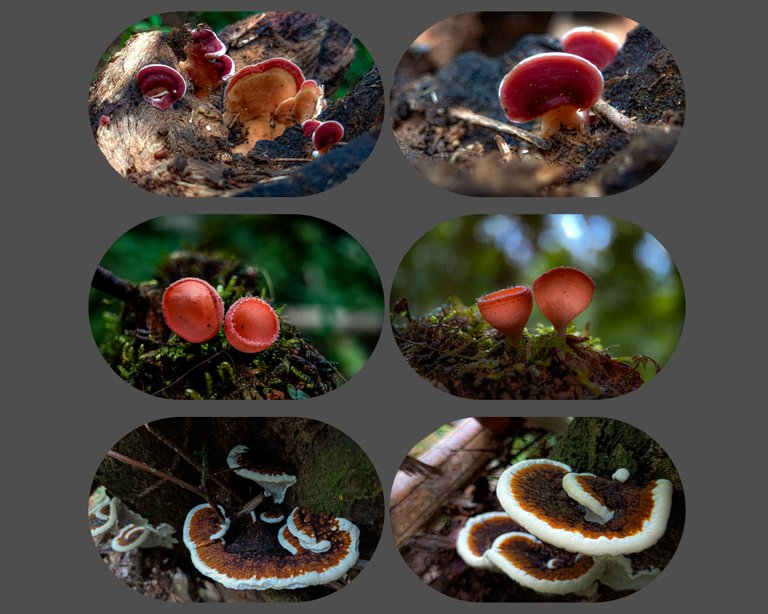
On a very Estri and enjoyable trip I explored mushrooms around the Blang Rantau village plantation. The trip to Blang Rantau village was quite enjoyable because the village can enjoy beautiful mountain views and also very Estri on this trip.
I visited there to welcome my neighbor's oil palm fruit, after I did the job. I also took a little time to hunt for types of mushrooms around it. I managed to get two types of mushrooms that grow in large groups on rotting wood and also found a type of mushroom that I often get with the shape of the fruit and the beauty that fascinated me, so I was interested in taking some photos again.
The first mushroom I show is the one I often find on my plantation. Maybe many of my FungiFriday friends have shown this mushroom but the shape and color of this mushroom always binds my heart to get closer and photograph it again, even though my friends often see this mushroom here and including myself. But I feel not satisfied enough to show it again.
This fungus is known on Google as (Pazizaceae) which is one of the fungal families in the ascomycota that produces fungi that tend to grow in a "cup" shape. Spores are formed on the inner surface of the fruiting body. The cup shape usually functions to concentrate raindrops into the spore spray that comes out of the cup.**
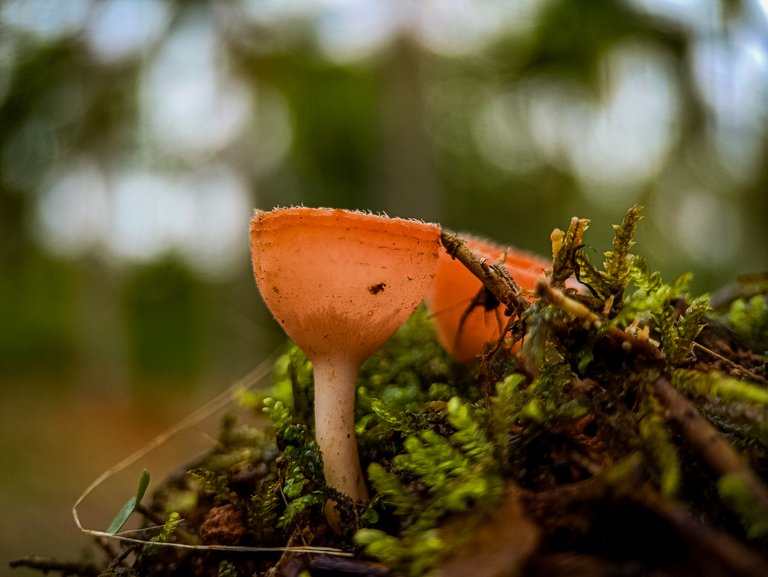
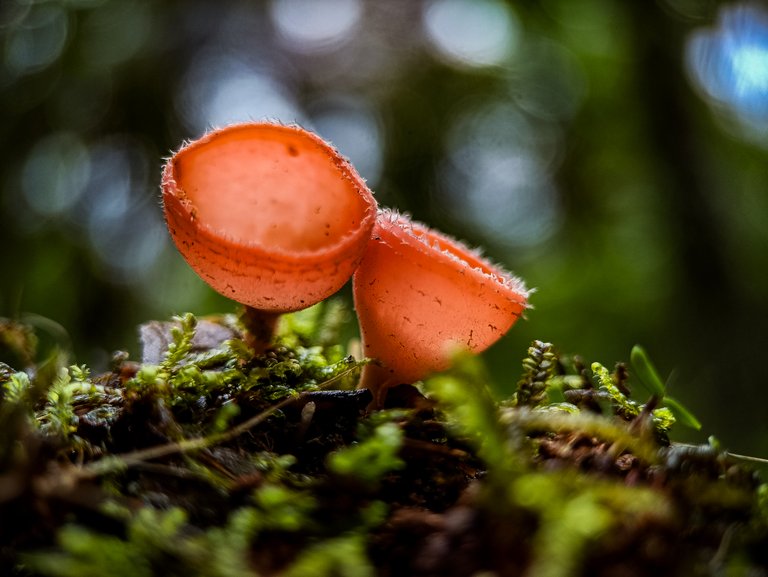
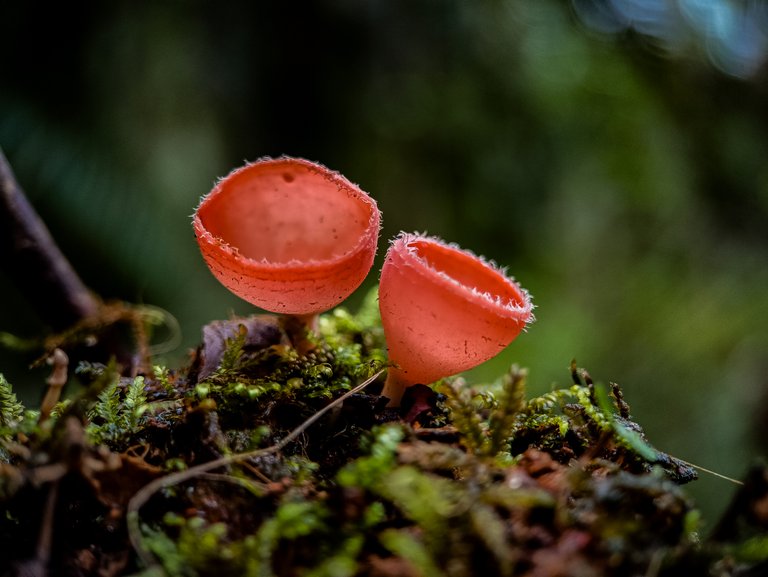
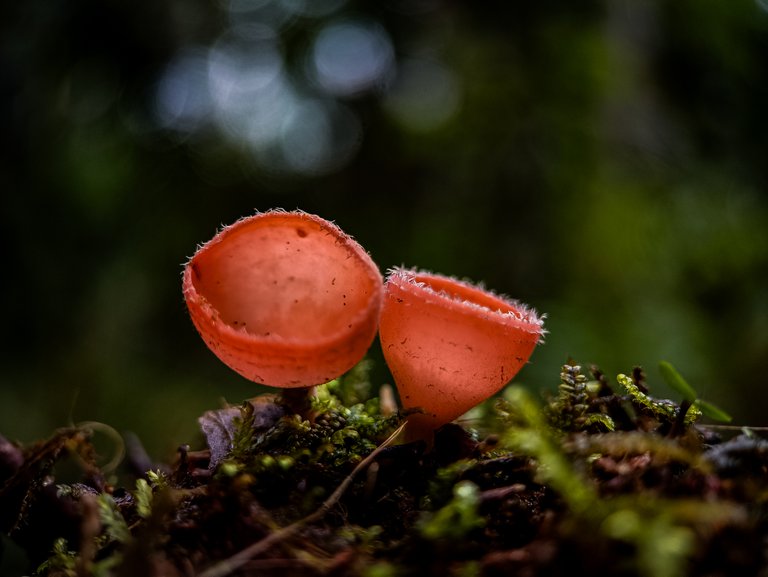

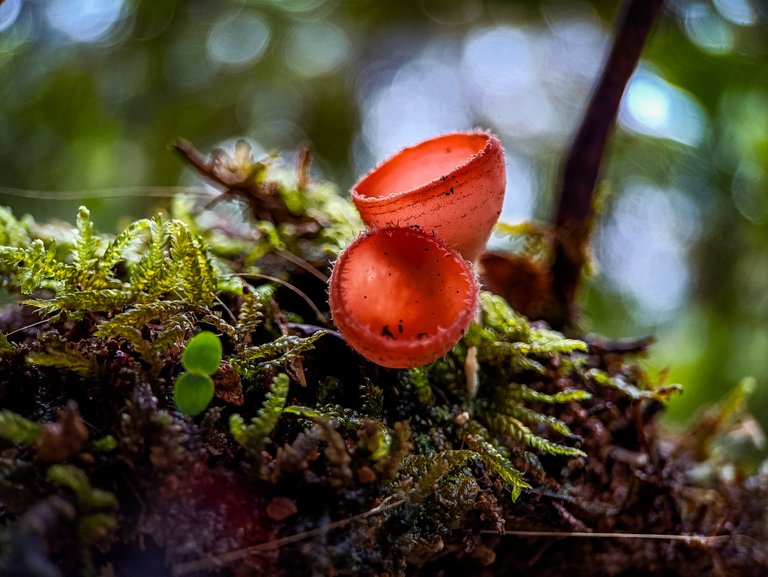
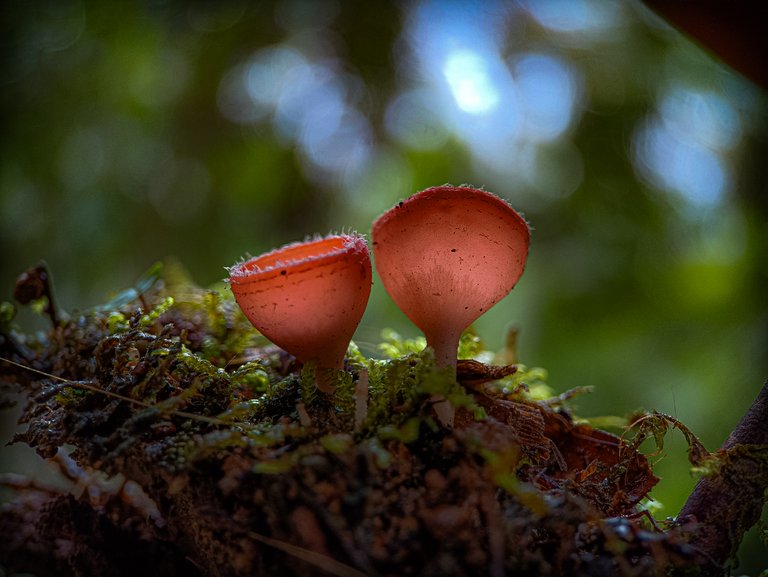
After I looked elsewhere or I saw various rotting trees, I found a second type of mushroom growing on the side of the wood that had been cut and rotted.
This mushroom is known on google as (fistulina hapatica) also More easily recognized unusual beef mushroom classified in agaricales, which is commonly found in the UK and throughout Europe, but can also be found in North America, Australia, North Africa and I also got it in Indonesia. As the name suggests, the appearance of the fruit is very similar to a piece of raw meat. It has also been used as a meat substitute in the past, and can still be found in some French markets. It tastes a little sour, to be eaten it must be collected when young and may be tough and needs to be cooked for a long time.**
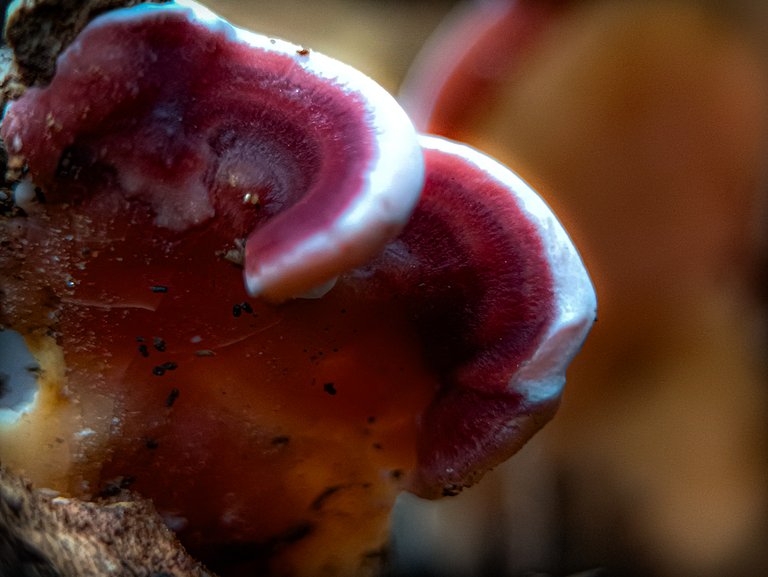
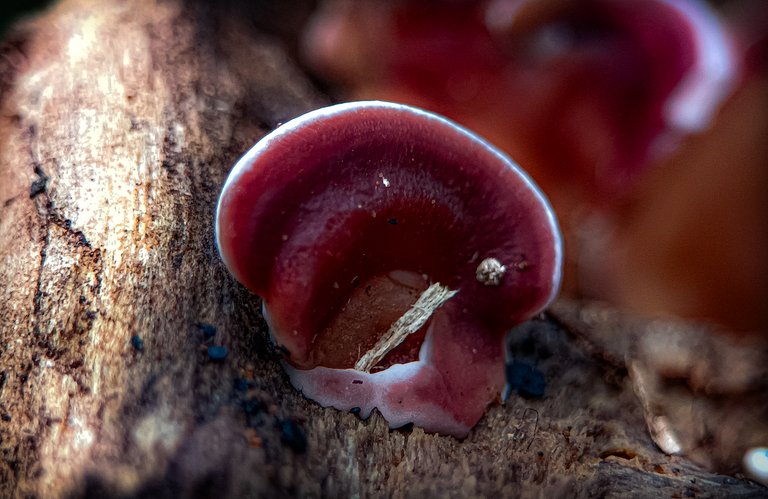
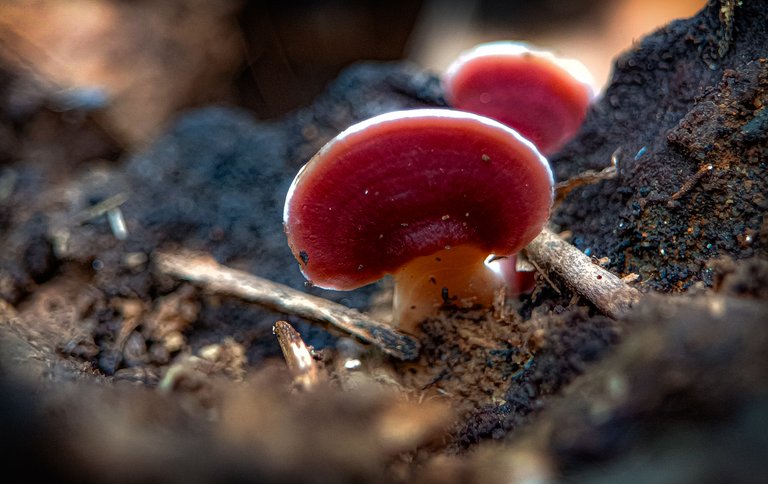
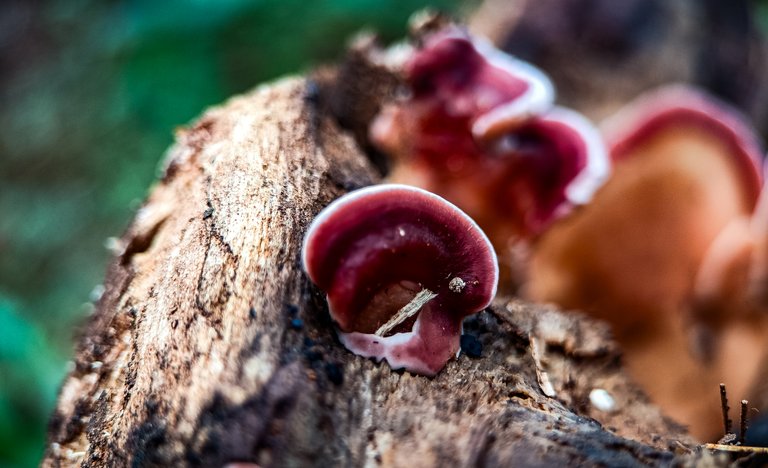
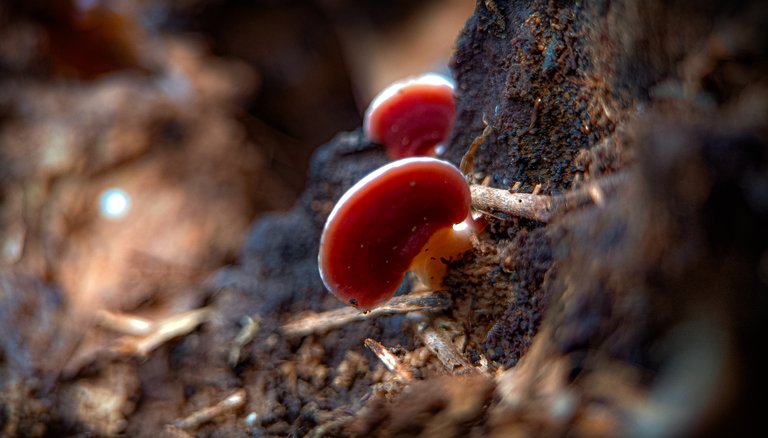
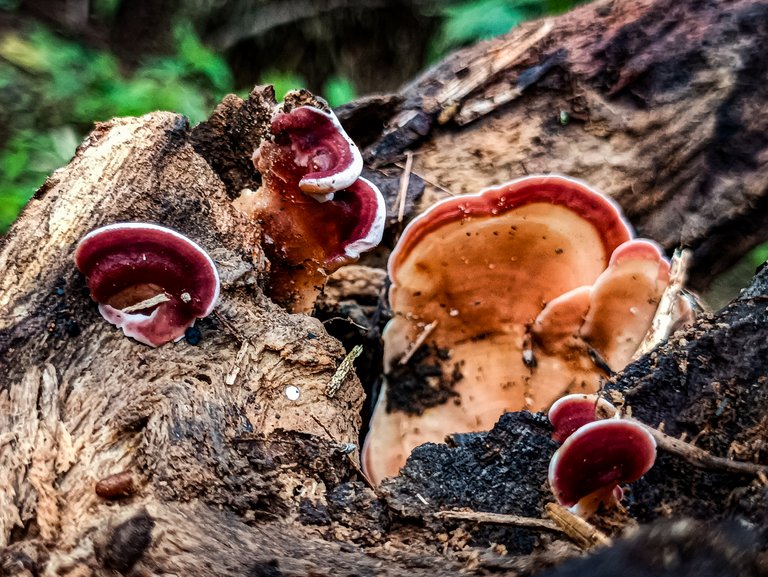
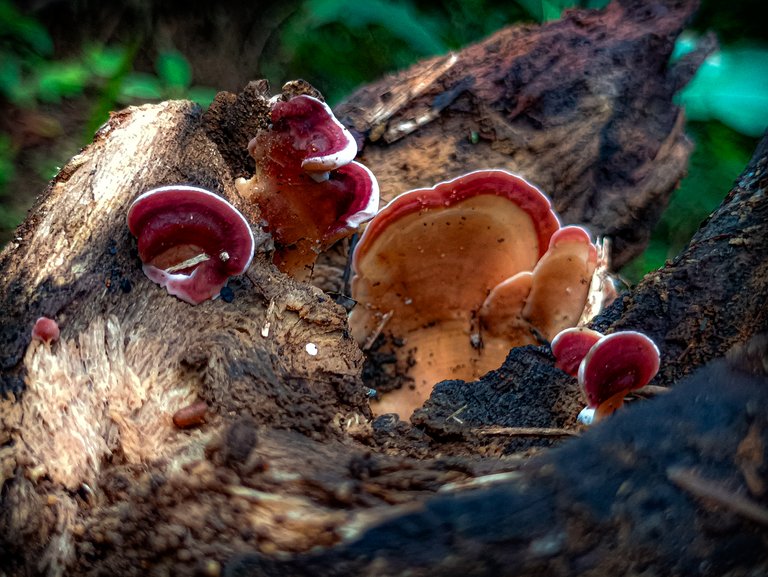
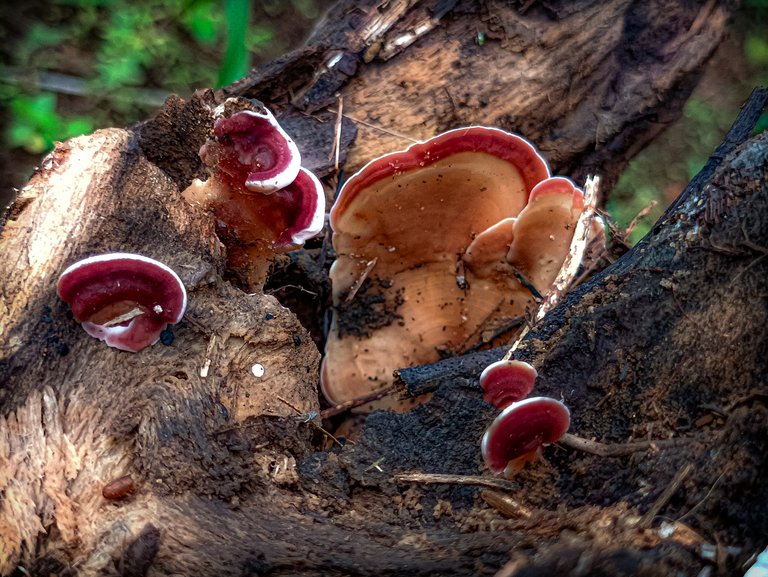
It was pretty weird when I was spreading out the little stream and I found a big tree that had a fungus growing in between the tree parts.
This third fungus googled as (Fomitopsis pinicola) is a common stem rot fungus found in both softwood and hardwood trees. It is usually found on dead pine trees, but can be found on all conifers. It can also be seen growing on large trunk wounds, broken buds, and dead tissue in living trees. And it turns out, in mature forests, this stem rot fungus causes a huge annual loss of wood volume in Alaska’s major tree specialty. About a third of the old growth volume in southeast Alaska is damaged, mostly by decay from this fungus.
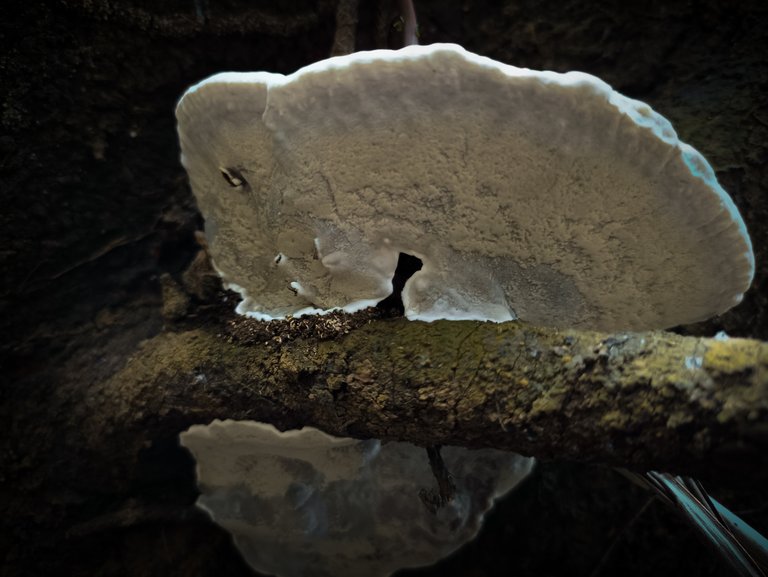
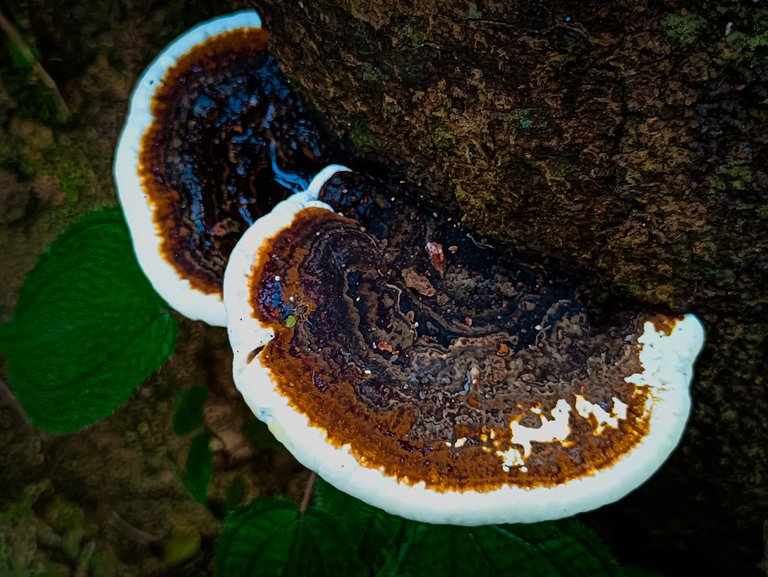
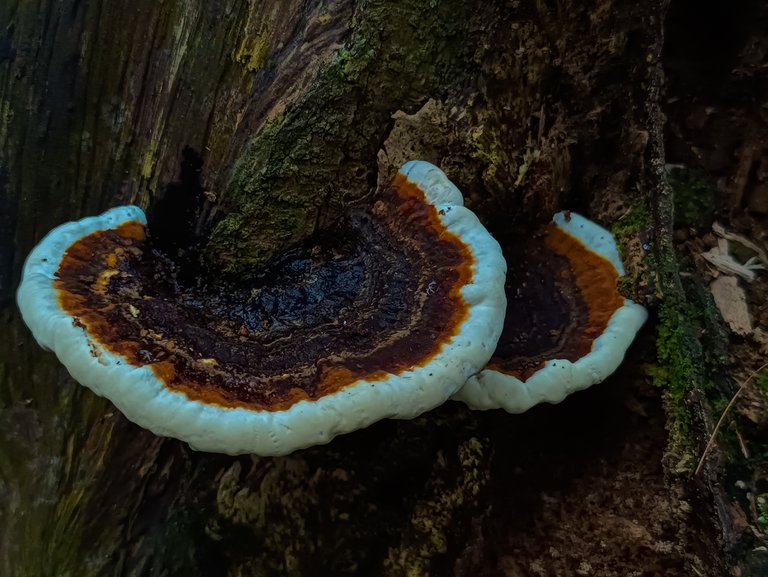
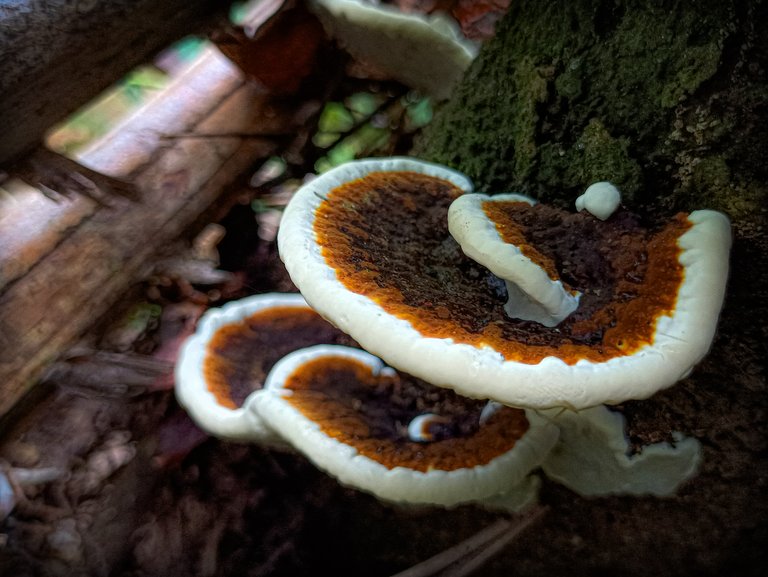
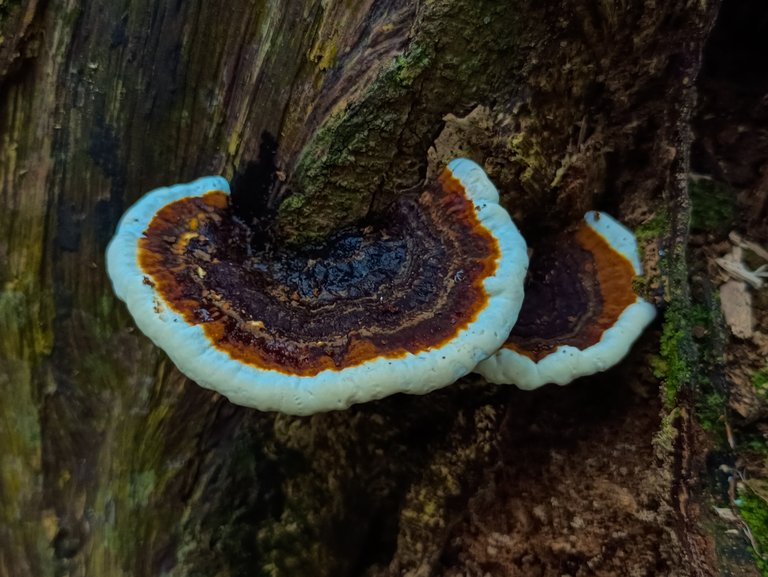
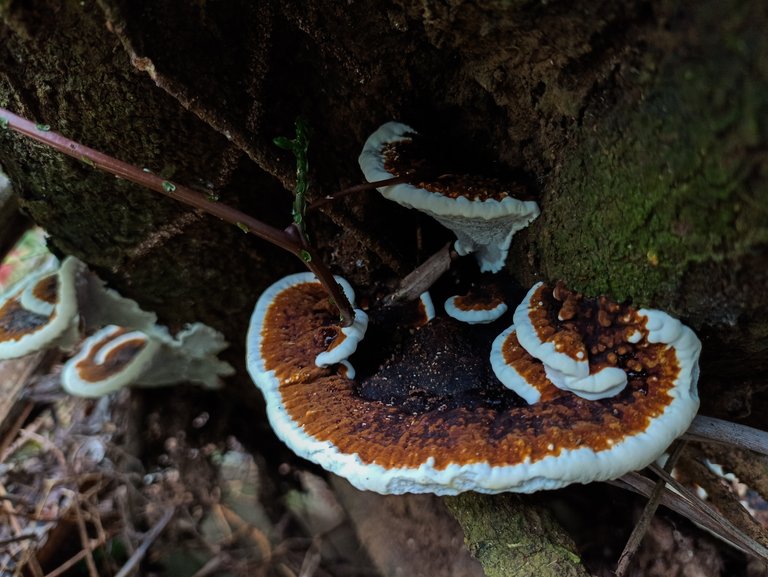
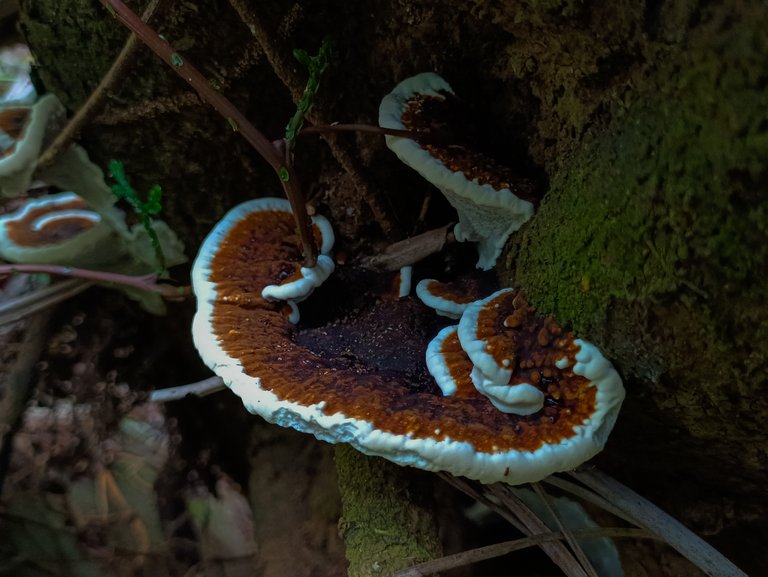
This is my contribution to #fungifriday organized and curated by @ewkaw
Alright, friends of hiver fungifriday, that's a short story that I can share on this occasion. Hopefully friends of hiver like it and here are some photos of types of mushrooms that we can see together on this occasion. Hopefully my post can entertain you all. Thank you very much for the support you give by reading my blog. Have a nice day until we meet again in the next post.
I took the picture with a POCO M4 Pro cellphone and an additional lens. I edited it using the Lightroom and incollage applications.
NOTE: I wrote it in Indonesian with the help of Google Translate into English.
| Photography | fungi |
|---|---|
| Camera Used | Smartphone |
| Model | POCO M4 Pro |
| Photographer | @frizzy97 |
| Location | Aceh, Indonesia |